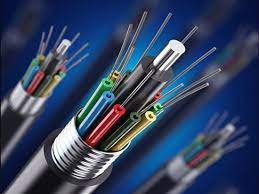Coutact Us
Whatsapp:+8618075108880
Email:info@ec-fibercable.com
Time:2023-03-07 09:45:32
Non-metal optical cables, also known as all-dielectric optical cables, are used in applications where electrical conductivity is not desirable or safe, such as in high-voltage power lines, gas pipelines, and underwater installations. These cables are made entirely of dielectric materials, such as polymers, ceramics, or glasses, and do not contain any metal components.
Non-metal optical cables offer several advantages over traditional metal-based cables, including lightweight, high tensile strength, and resistance to electromagnetic interference. However, they are still susceptible to faults that can impact their performance. This article will explore the common problems that can occur with non-metal optical cables and the solutions that can be applied to rectify them.

Fiber Breakage
Fiber breakage is a common problem that can occur with non-metal optical cables. This happens when one or more of the fibers in the cable break or become damaged. Fiber breakage can occur due to several reasons, including excessive tension or bending, sharp edges, or impact.
Solution: The solution for fiber breakage is to identify the damaged fiber and replace it. Fiber breakage can be identified through visual inspection or using a fiber optic tester. It is essential to ensure that the fiber is correctly installed to prevent future breakage. Proper handling techniques should also be followed during installation.
Connector Issues
Connector issues are another common problem that can occur with non-metal optical cables. These issues can result from dirty or damaged connectors or misalignment during installation. Dirty connectors can cause signal loss or affect the quality of the signal, while misaligned connectors can result in signal loss.
Solution: To rectify connector issues, the connectors should be cleaned or replaced if they are damaged. It is essential to ensure that the connectors are correctly aligned during installation to prevent future connector issues. Connector cleaning should be done using a lint-free cloth or a specialized cleaning tool.
Cable Pinching
Cable pinching is a common problem that can occur when the cable is bent too tightly. This can cause the fibers in the cable to become damaged or broken, resulting in signal loss or poor signal quality.
Solution: The solution for cable pinching is to ensure that the cable is not bent too tightly during installation. The cable should be bent according to the manufacturer's recommended bend radius. It is essential to avoid sharp bends or kinks in the cable.
Cable Crush
Cable crush occurs when the cable is subjected to excessive pressure or crushing force. This can cause the fibers in the cable to become damaged, resulting in signal loss or poor signal quality.
Solution: The solution for cable crush is to ensure that the cable is not subjected to excessive pressure or crushing force. The cable should be installed in a manner that prevents any crushing or pressure on the cable. It is essential to follow the manufacturer's recommended installation procedures.
Environmental Factors
Environmental factors such as temperature, humidity, and exposure to chemicals can impact the performance of non-metal optical cables. Temperature extremes can cause the cable to expand or contract, resulting in fiber damage. Humidity can cause moisture to enter the cable, affecting signal quality. Exposure to chemicals can cause the cable jacket to deteriorate, resulting in cable failure.
Solution: To prevent environmental factors from impacting the performance of non-metal optical cables, the cables should be installed in a controlled environment. The temperature and humidity should be monitored, and the cables should be protected from exposure to chemicals. The cable jackets should be made of materials that are resistant to chemicals.
Fiber Misalignment
Fiber misalignment occurs when the fibers in the cable are not properly aligned with the connectors or other fibers. This can cause signal loss or poor signal quality.